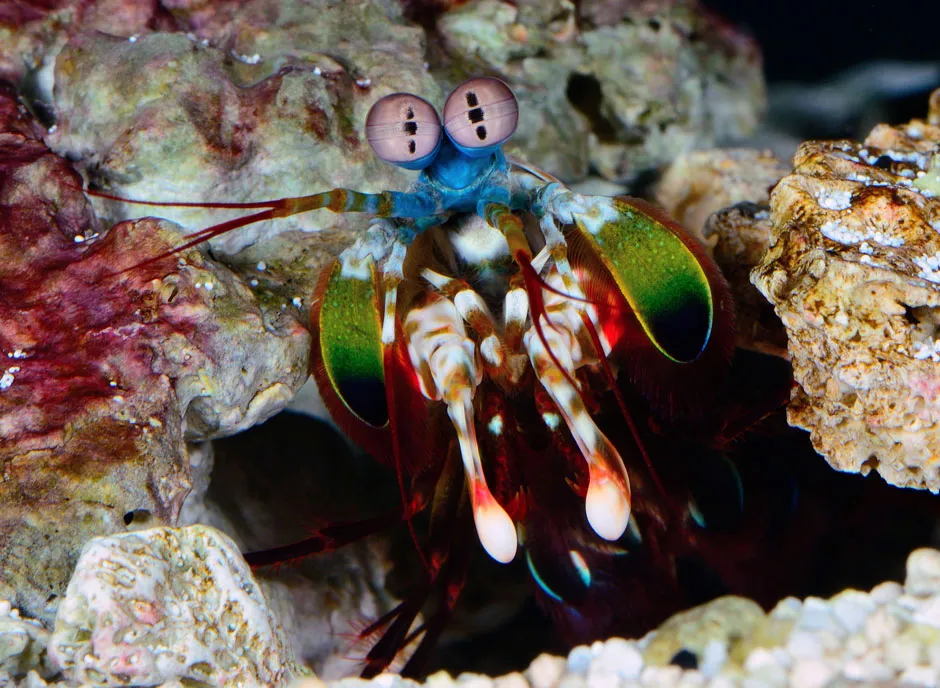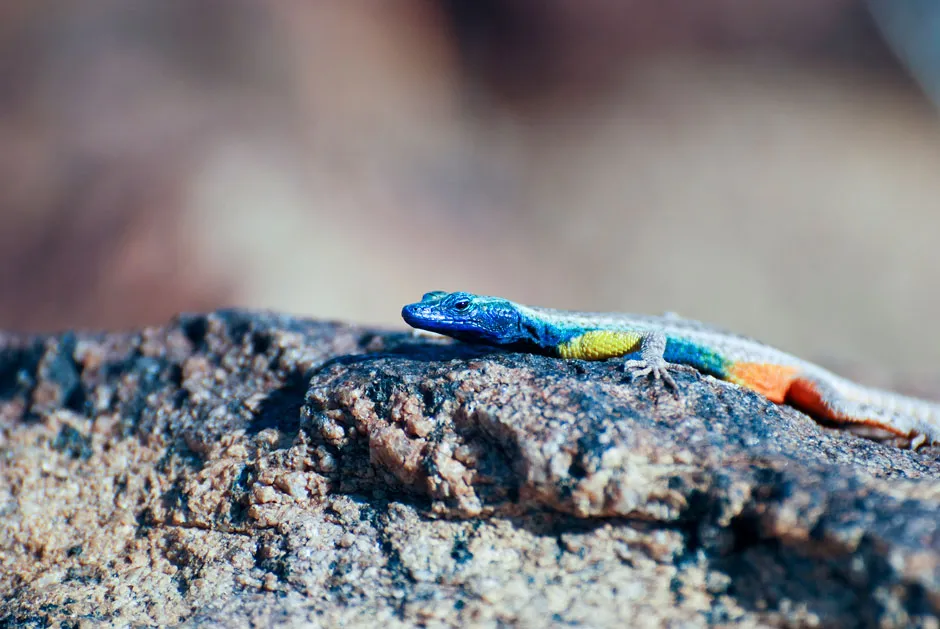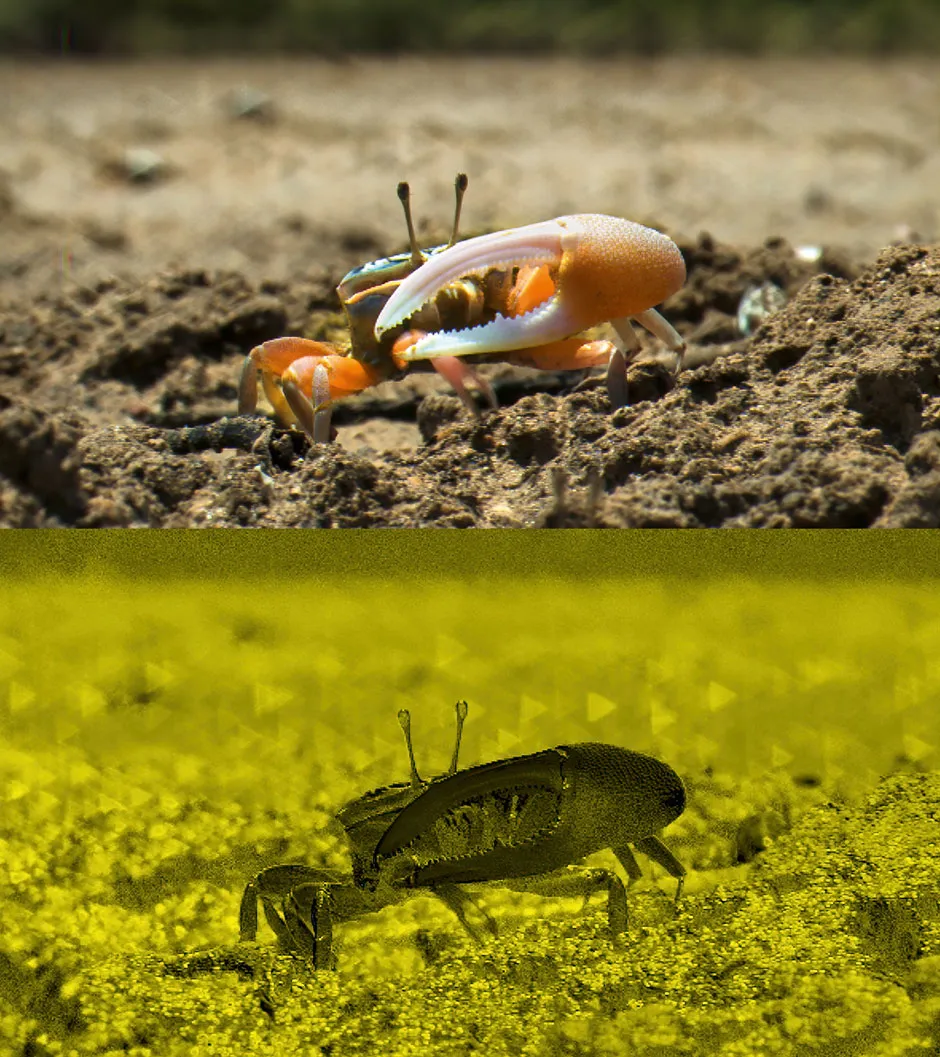The BBC’s new nature mini-series Life in Colour has been a long long time coming. In fact, Sir David Attenborough, who hosts the show, originally conceived the idea of a documentary delving into nature’s use of colour in the 1950s. However, as most screens were black and white then, the concept was shelved.
Fortunately, by 2021, such a show is possible. And not just thanks to colour screens. New camera technologies – some developed solely for this series – show the world as several remarkable animals see it, revealing sights using UV and polarised light that would otherwise be invisible to the human eye.
“New discoveries are giving us fresh insights into the lives of these animals and new cameras are allowing us to see into a world of colour as never before,” says Attenborough.
“We’re only just beginning to understand the many ways in which animals use colour, particularly those colours we can’t even see. For us colour in the natural world is a source of beauty, of wonder, but for animals, it’s a tool for survival.”
So, what animals actually appear in the show? And what on Earth is polarised light? Glad you asked: here’s all you need to know about Attenborough’s Life in Colour.
When is Attenborough’s Life in Colour on TV?
Attenborough's Life in Colour will start Sunday 28 February 2021 at 7pm on BBC One. It will be available to watch shortly afterwards on BBC iPlayer.
The second episode of the two-part series is expected to air Sunday 7 March at 7pm, BBC One.
What animals are in Attenborough’s Life in Colour?
Episode one – Seeing in colour

The opening episode will explain how millions of years ago the ability to see in colour first gave animals many advantages – be it finding food, attracting a mate or warning off predators.
To illustrate how colour is currently used by animals, Attenborough will guide viewers through the mating rituals of hummingbirds, birds of paradise and peacocks (whose tails feature up to 150 dazzling eyespots). The episode will also follow how fiddler crabs use polarised light to better detect mates – and avoid prey.
Viewers can also see several animals who change colour as they reach maturity, including mandrill monkeys, the males of which develop a bright red nose and, ahem, rump. The show will also outline how Andean flamingos are actually born white – only getting their pink colour from their diet. (For a full explanation, see our Why are flamingos pink? Q&A)
Other animals in the episode include strawberry poison dart frogs (barely bigger than a fingernail), and blue-moon butterflies, whose eyes are sensitive to UV light.
For more, see our full guide to the animals in Life in Colour episode one, or why the sensational mantis shrimp.
Episode two – Hiding in colour

As you might be able to guess from the title, the second episode showcases a selection of animals who use colour to disguise and defend themselves
Some of the creatures in this episode include a blue-striped blenny (which changes its colour to attack prey on Australia’s Great Barrier Reef) and Cuban snails, molluscs that use a combination of coloured patterns as a form of defence.
Attenborough also explains how Bengal tigers are aided by their orange stripes when hunting, and why Zebra’s grayscale coat can create ‘motion dazzle’ as they move.
Mature male Augrabies lizards, the strongest of which take on rainbow colours during mating season, also feature in the episode – alongside younger males who stop their skin from changing hue in order to imitate females and sneak past the alphas. Sneaky sneaky.
What is polarised light?
Think of light as like a vibration, with unpolarised light-waves vibrating in several directions. Light that’s emitted by the Sun is a good example here.
Polarised light is like a vibration that only travels in a single plane – for instance, solely up and down. Many sunglasses come with polarising lenses that absorb horizontal light while letting through the vertical waves.
Cameras used in Life in Colour visualise how creatures like fiddler crabs see in polarised light – and are therefore better able to spot predators and potential mates.
For more, see our explainer, What is polarised light?

How was Life in Colour filmed?
Each episode of Life in Colour ends with a behind-the-scenes segment revealing how some of the show’s sequences were put to camera.
Partway through shooting Life in Colour, the coronavirus pandemic spread through the globe, cancelling some filming.
However, David Attenborough was able to complete most of his on-location filming, with narrations completed from his home in London.
Is there a trailer for Life in Colour?
Oh yes. As well as previewing the many animals to appear in the series, the sneak peek sees David Attenborough showing off new colour camera technology.
Attenborough’s Life in Colour starts Sunday 28 February at 7pm.